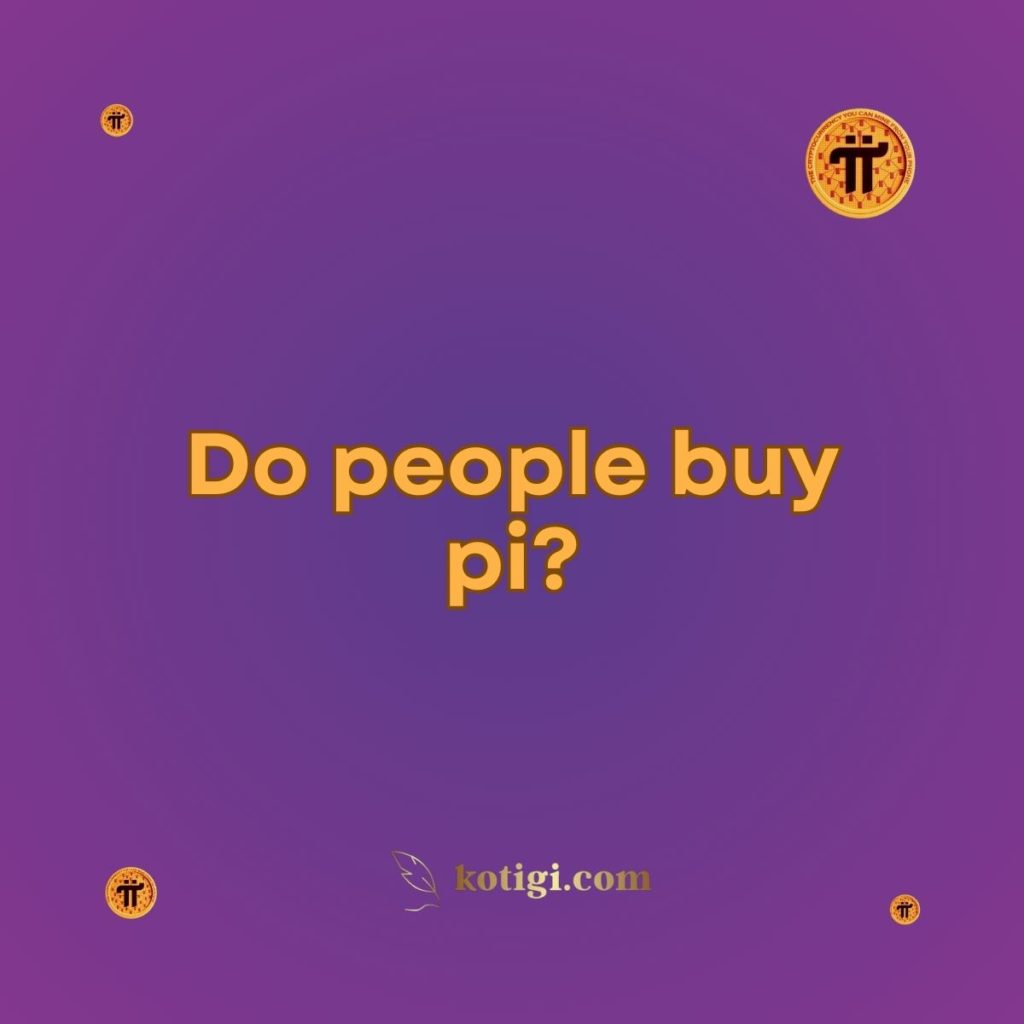
Do people buy pi?
As of now, people cannot officially buy Pi coins on public exchanges. Pi Network is still in its enclosed mainnet phase, meaning Pi is not yet available for sale or purchase with fiat currencies or other cryptocurrencies. Users can earn Pi by mining through the app, but external buying and selling will only be possible after the open mainnet launches.
Introduction
With millions of users already involved in the Pi Network, one of the most common questions is, “Do people buy Pi?” Pi’s unique approach to mining through a mobile app has intrigued many, but its enclosed mainnet phase limits certain functionalities like buying and selling Pi. This article will explore whether Pi can be bought, how people are currently interacting with Pi, and what the future holds for purchasing Pi once the network evolves.
Can You Buy Pi Right Now?
Enclosed Mainnet Phase
Currently, Pi Network is in its enclosed mainnet phase, which restricts external transactions and trading. This means that Pi is not available for public purchase on cryptocurrency exchanges, and users cannot buy Pi with fiat currencies like USD, EUR, or other cryptocurrencies like Bitcoin or Ethereum. The enclosed mainnet allows the Pi team to focus on scaling the network, verifying users through KYC (Know Your Customer), and preparing for a future open mainnet launch.
During this phase, the only way to acquire Pi is by mining it through the Pi Network app or engaging in transactions with other Pi users within the ecosystem.
How People Earn Pi?
Instead of buying Pi, users can currently earn it by mining through the Pi Network app. The mining process is simple and does not require the same computing power as Bitcoin mining. By logging into the Pi app daily and pressing the “mine” button, users earn Pi coins. The more users you refer, the higher your mining rate. However, the supply of Pi coins you can mine decreases over time as the network grows.
Because Pi is still in its development stage, users are incentivized to mine and hold their coins, with the expectation that Pi will have a real market value once it becomes tradable.
Peer-to-Peer Transactions Within Pi Ecosystem
Can People Trade Pi Among Themselves?
While you cannot buy Pi on public exchanges yet, there are peer-to-peer (P2P) transactions happening within the Pi ecosystem. These transactions involve users who have passed KYC and are verified within the network. In some cases, users have exchanged Pi for goods or services provided by other Pi members.
For example, a user might offer a product or service in exchange for Pi coins, facilitating a form of trade within the Pi Network’s enclosed environment. However, these transactions are limited to the ecosystem, and Pi cannot be exchanged for real money or cryptocurrencies until the open mainnet phase.
No External Purchases Allowed
Although P2P exchanges within the network are possible, you cannot buy Pi with fiat currencies or other cryptocurrencies outside of Pi Network. Any platform or individual offering to sell Pi externally is likely engaging in fraudulent activity or a scam, as Pi is not yet tradable outside its ecosystem.
Future of Buying Pi: What Happens After the Open Mainnet?
Open Mainnet Launch
The open mainnet phase is expected to launch once Pi Network completes essential milestones, including KYC verification for a large portion of its user base and ensuring network security. Once the open mainnet launches, Pi will be tradable on public exchanges, and people will be able to buy Pi with fiat currencies or other cryptocurrencies.
During the open mainnet, Pi will operate like other tradable cryptocurrencies, and people will have the opportunity to purchase Pi through exchanges like Binance, Coinbase, or other popular platforms.
How to Buy Pi on Public Exchanges?
Once Pi is listed on exchanges, users will be able to:
- Create an Account on a Supported Exchange: First, you will need to create an account on a cryptocurrency exchange that lists Pi. Popular exchanges like Binance, Kraken, or Coinbase may list Pi once it becomes tradable.
- Deposit Funds: After creating an account, you will need to deposit fiat money (like USD or EUR) or cryptocurrencies (like Bitcoin or Ethereum) into your exchange account.
- Buy Pi: Once Pi is listed, you can place an order to buy Pi using your deposited funds. Depending on the exchange, Pi may be paired with fiat currencies or other cryptocurrencies.
- Store Pi in a Wallet: After purchasing Pi, you can store it in your exchange wallet or transfer it to a personal cryptocurrency wallet for better security.
Potential Value of Pi in the Open Market
The value of Pi once it becomes tradable will depend on several factors, including:
- Supply and Demand: As with any asset, the market price of Pi will be determined by supply and demand. The more people who want to buy Pi, the higher its value may rise.
- Network Growth: Pi’s value could increase if the network continues to grow and gains widespread adoption for real-world use cases like payments or decentralized applications (dApps).
- Utility: Pi’s market price will also be influenced by how useful the coin becomes. If Pi can be used for transactions, smart contracts, or other blockchain applications, its demand may increase.
Risks of Unofficial Platforms
Scams and Fraudulent Platforms
While Pi cannot currently be bought officially, there are unofficial platforms that claim to sell Pi. These platforms are often scams, and users should avoid engaging with them. The Pi Core Team has repeatedly warned users to avoid any third-party sites that claim to offer Pi trading during the enclosed mainnet phase. Any promises to buy or sell Pi outside of the official ecosystem are fraudulent and should be treated with caution.
Beware of Speculative Prices
You might come across websites or platforms that list speculative prices for Pi coins, but these prices are not official. Since Pi is not yet tradable on public exchanges, any prices listed on such websites are purely speculative and do not reflect the true market value of Pi.
Until Pi is listed on legitimate exchanges after the open mainnet, its real market value cannot be determined.
What Can You Do While Waiting for Pi to Be Tradable?
Continue Mining Pi
While waiting for Pi to be listed on public exchanges, users can continue mining Pi through the mobile app. Although the mining rate decreases over time, you can still accumulate Pi coins by actively participating in the network. The more you mine now, the more Pi you will have when it becomes tradable.
Complete KYC Verification
Another crucial step to take is completing your KYC verification. Without passing the KYC process, you will not be able to trade Pi once the open mainnet launches. The Pi Core Team has emphasized that KYC is mandatory to ensure that only legitimate users hold Pi coins and can trade them once the network opens.
Stay Informed
Make sure to follow official Pi Network updates through the Pi app and their social media channels. This will keep you informed about the progress toward the open mainnet launch and any opportunities for purchasing Pi in the future.
Conclusion
As of now, people cannot officially buy Pi coins on public exchanges. The only way to acquire Pi is by mining it through the Pi Network app or through P2P exchanges within the Pi ecosystem. However, once the open mainnet launches, Pi will become tradable on public exchanges, and people will be able to buy and sell Pi with fiat currencies or other cryptocurrencies. Until then, users should avoid unofficial platforms claiming to sell Pi, as these are often scams.
Key Takeaways:
- People cannot buy Pi on public exchanges yet due to the enclosed mainnet phase.
- Pi can only be earned through mining or exchanged within the Pi ecosystem.
- The open mainnet will allow users to buy Pi with fiat or other cryptocurrencies.
- Beware of unofficial platforms or scams offering to sell Pi before the open mainnet.
- Pi’s value will be determined once it becomes tradable on public exchanges.





